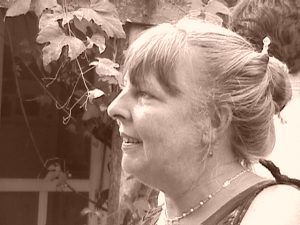Remembering Barbara V.
As a young and quiet child, I did not easily ask others for help. But, I do remember asking her for help. A French Canadian woman who assisted at the MMA Science Library. She would take her (cigarette) breaks on the front bench. Sometimes, her father would be visiting and I could hear the fast-past French zipping around on that front porch. She had a sort of gravelly voice and an infectious laugh and always the hair picks in her loose bun. I finally got up the nerve to ask her about a few words in my French textbook that I was having issues with – I had just started the seventh grade and we must have been up for Columbus Day weekend. I got my answer but I also got a stream of French that left me a bit clueless – I realized I was going to be swamped in French – and to be honest, it was never my forte even though I kept it up through my first semester of college. Do you know how many times I read The Stranger in French? It was ridiculous.
By the time of the French question, I had known her for a year or so maybe. What was the most interesting about her was the birds. She rehabilitated birds and baby birds – orchestrating a crazy waking and feeding schedule with her partner. They seemed to be up around the clock with shifts for feeding the baby birds. She seemed to always have a box with her of several baby birds or injured adult birds. I know that over time it took a toll on her to the point that she had to give it up. It was stressful, exhausting, and she of course felt defeated if she lost a bird. These were birds mainly brought to her by others; a few she found herself. She developed all sorts of appropriate mixtures of food made of mashed bugs and meal worms, berries, insects – whatever that species of bird ate. And oh the poop! If you have ever taken in an injured bird, even for a short while, you know how much they can poop!
She was a lover of nature and a lover of all animals – she had so many dogs that I cannot remember all of their names. But they were sweet and all shapes and sizes. She even adopted one of Madaket Millie’s dogs upon Millie’s death – taking in Paddle Paws. She was a fixture in Madaket as well – out in her cottage near the harbor with her partner’s paintings affixed to the exterior. She would tell me stories of the last day of school in high school and how her parents let she and her brother drive overnight from Montreal on their own to make it to the steamship to come over for the summer. She had been a summer kid – who made Nantucket her lifelong home, for a time, living in the house she had summered in all those years as a child and teenager.
The other morning, almost as if to say hello or send a message, a male cardinal alighted briefly on the front porch of the MMA’s science library bench (now Research Center) where she used to sit, and smoke, and feed her birds in between visitors. I’d like to think it was her – or my Other Nana – telling me that she is somewhere safe now, with her partner, and Paddle Paws and her dogs and all her animals, and, her parents. And don’t worry Barbara V., everyone will make sure that the turtles have a safe and loving home. Lots of love, ma cherie! I will miss you.
The step, however small, which is in advance of the world, shows the greatness of the person, whether that step be taken with brain, with heart, or with hands. – Maria Mitchell
JNLF
Recent Posts





